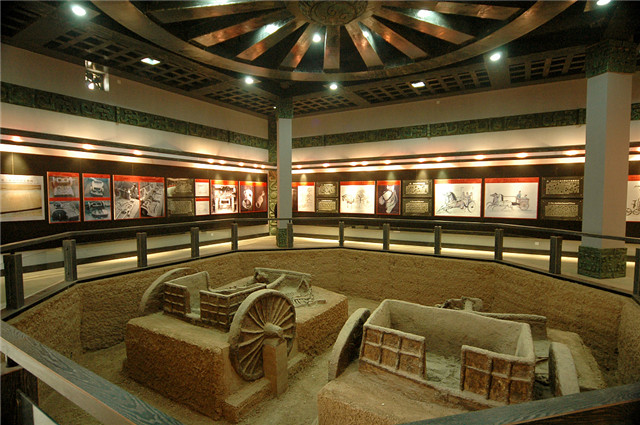A province with a history of more than 3,000 years


Population: 99,365,519 (2020)
Area: 167,000 square kilometers
Location: Central China
Situated in the mid-eastern part of China and on the middle and lower reaches of the Yellow River, Henan province is adjacent to Anhui and Shandong provinces to the east, and Shaanxi province to the west. To the south is Hubei province, and to the north, neighboring Hebei and Shanxi provinces. Enjoying a good geographical location, Henan lies at the junction of the Coastal Open Economic Zone and the country's western and central areas. This location helped Henan play a key role in the government policy called the Rise of the Central China Plan.
Climate:
Henan has a continental monsoon climate with four distinct seasons. The monsoon rain falls mostly in summer. The annual average temperature of the province is 12.7 C-16.2 C, and its number of annual hours of sunshine is 1,468 to 2,246.6, which is suitable for growing a variety of crops.
Resources:
Henan has abundant natural resources, and its mining industry's output value has been among the top five in the country for many years. Some 144 minerals have been discovered in the province, with 110 having proven reserves, including non-ferrous metals, precious metals, ferrous minerals, and energy minerals. Lingbao city in Sanmenxia became known as "China's Gold City".
History:
Henan province, believed to be one of the key birthplaces of Chinese civilization and Huaxia culture, has a history of more than 3,000 years, with more than 20 dynasties founding their capital cities in Henan. Of the eight ancient Chinese capital cities, four were in Henan: Luoyang, Kaifeng, Anyang and Zhengzhou. The four great inventions of ancient China –the compass, gunpowder, papermaking and printing – came from Henan.

Economy:
In 2018, the province recorded a GDP of 4.8 trillion yuan ($700 billion), an increase of 7.6 percent year-on-year, 1 percentage point higher than that of the whole country, with its GDP ranking fifth in China and first in midwest China.
The agriculture sector continued to expand, as the total grain output in 2018 reached 133 billion kilograms, accounting for 33.33 percent of the country's total number, a new height in history.
The added value of industries above a designated scale saw an increase of 7.2 percent, 1 percentage points higher than that of the whole country, and the added value of service industry reached 2.17 trillion yuan, the highest in Central China.
In 2018, the total investment in fixed assets (excluding farmers) grew by 8.1 percent, 2.2 percentage points higher than that of the whole country. The total import and export value exceeded 550 billion yuan for the first time, up 5.3 percent year-on-year, and exports increased by 12.8 percent.
Enterprises in the province performed well over recent years. The profits of industrial enterprises above a designated scale witnessed an increase of 24.5 percent. The general financial revenue hit 587.58 billion yuan, and the local general public budget revenue reached 376.39 billion yuan, up 10.5 percent, while the province's per capita GDP was 50,152 yuan, an increase of 7.2 percent year-on-year.
Tourism resources:
Henan province boasts abundant tourism resources, and it has the country's best array of underground archeological sites and collections of cultural relics, such as the famous Yangshao culture, which dates as far back as 6,000 years ago, and Hangu Pass, where the Tao Te Ching was written by Lao Zi, the founder of Taoism. Henan is also home to Shaolin Temple, which has a history of more than 1,500 years, and was the country's first professional institution for learning martial arts. There are 189 key cultural relic sites in Henan under State protection, and two are on UNESCO's World Cultural Heritage – the Ruins of Yin in Anyang, and Longmen Grottoes in Luoyang.
Thanks to its unique geographic and geomorphic conditions, Henan has various unique natural landscapes, including eight national scenic areas and 23 provincial ones, which include Songshan Mountain, Baiyun Mountain, Taihang Grand Canyon, all of which are great natural wonders of the world.

Administrative divisions:
Henan province governs 18 prefecture-level cities: Zhengzhou, its provincial capital, Kaifeng, Luoyang, Pingdingshan, Anyang, Hebi, Xinxiang, Jiaozuo, Puyang, Xuchang, Luohe, Sanmenxia, Nanyang, Shangqiu, Xinyang, Zhoukou, Zhumadian, and Jiyuan.
Sister cities:


MOST POPULAR
- 1 China to continue opening up its mega-market to world: premier
- 2 Policies concerning expats, foreign enterprises in November 2025
- 3 China to enhance convenience for inbound tourism: minister
- 4 Departure tax refund applications surge 285% as inbound tourism rebounds
- 5 China's foreign trade up 3.6% in first 11 months of 2025







